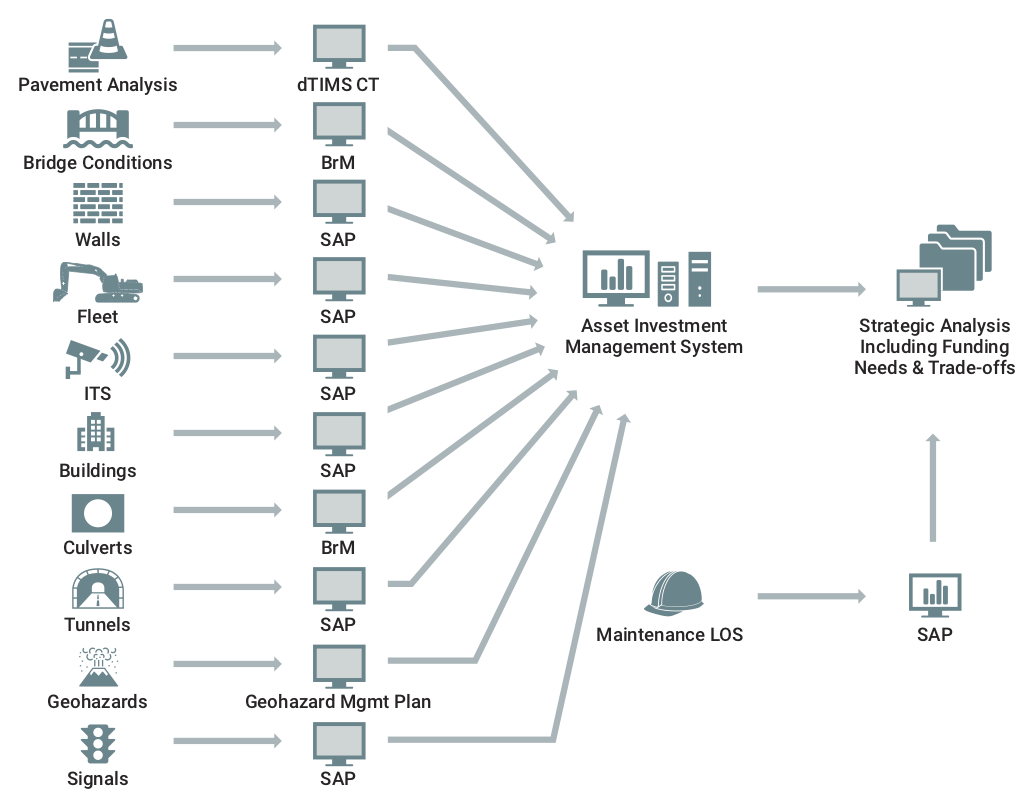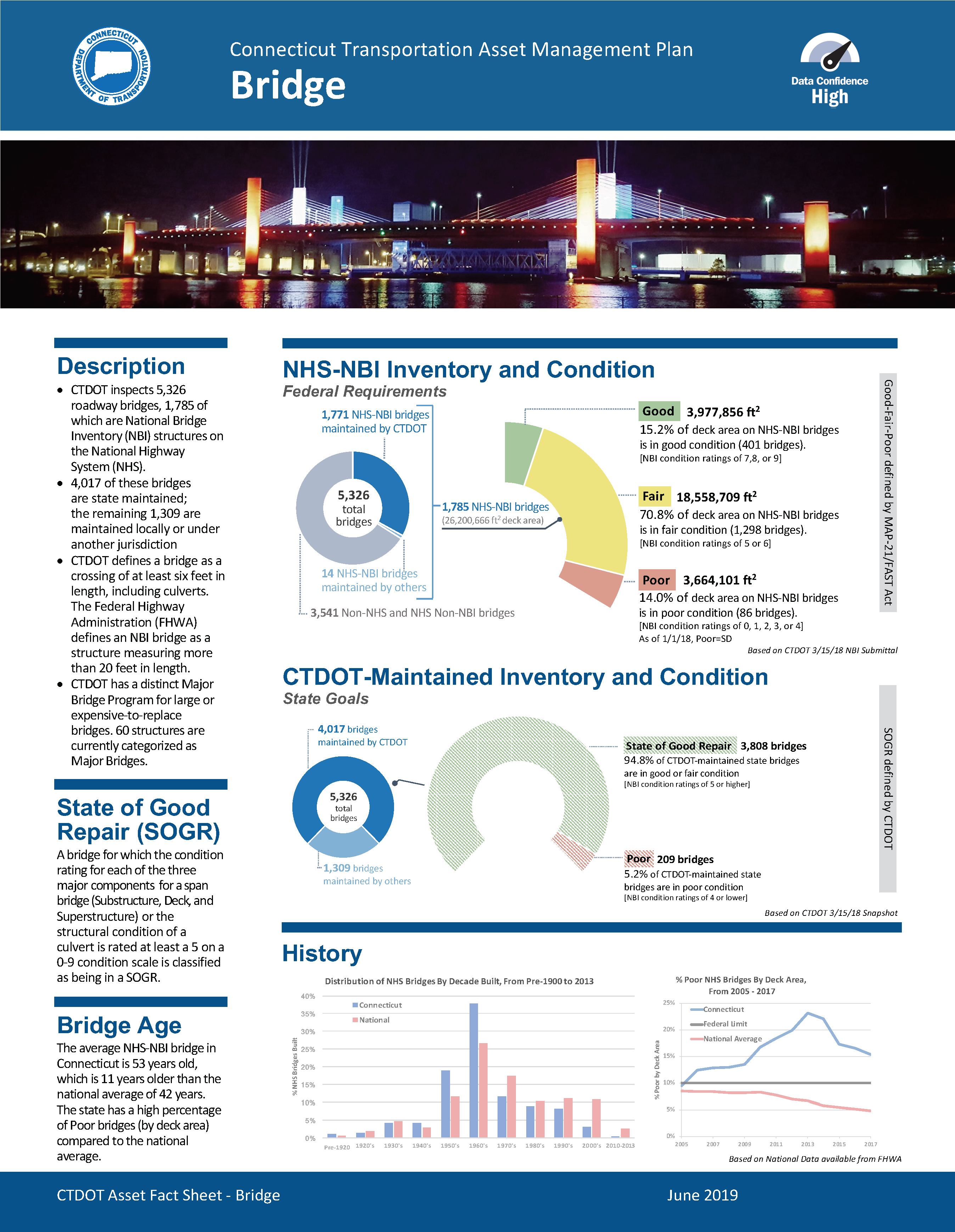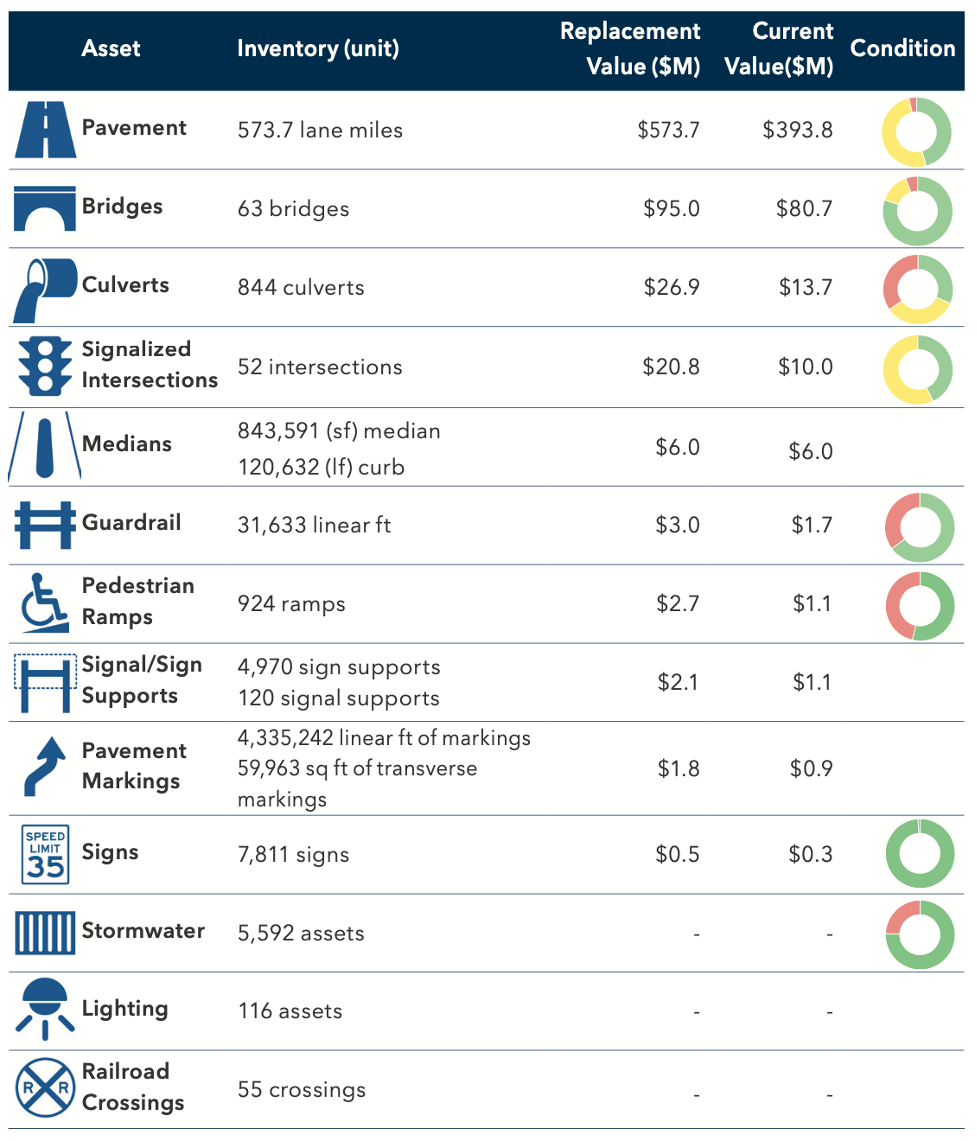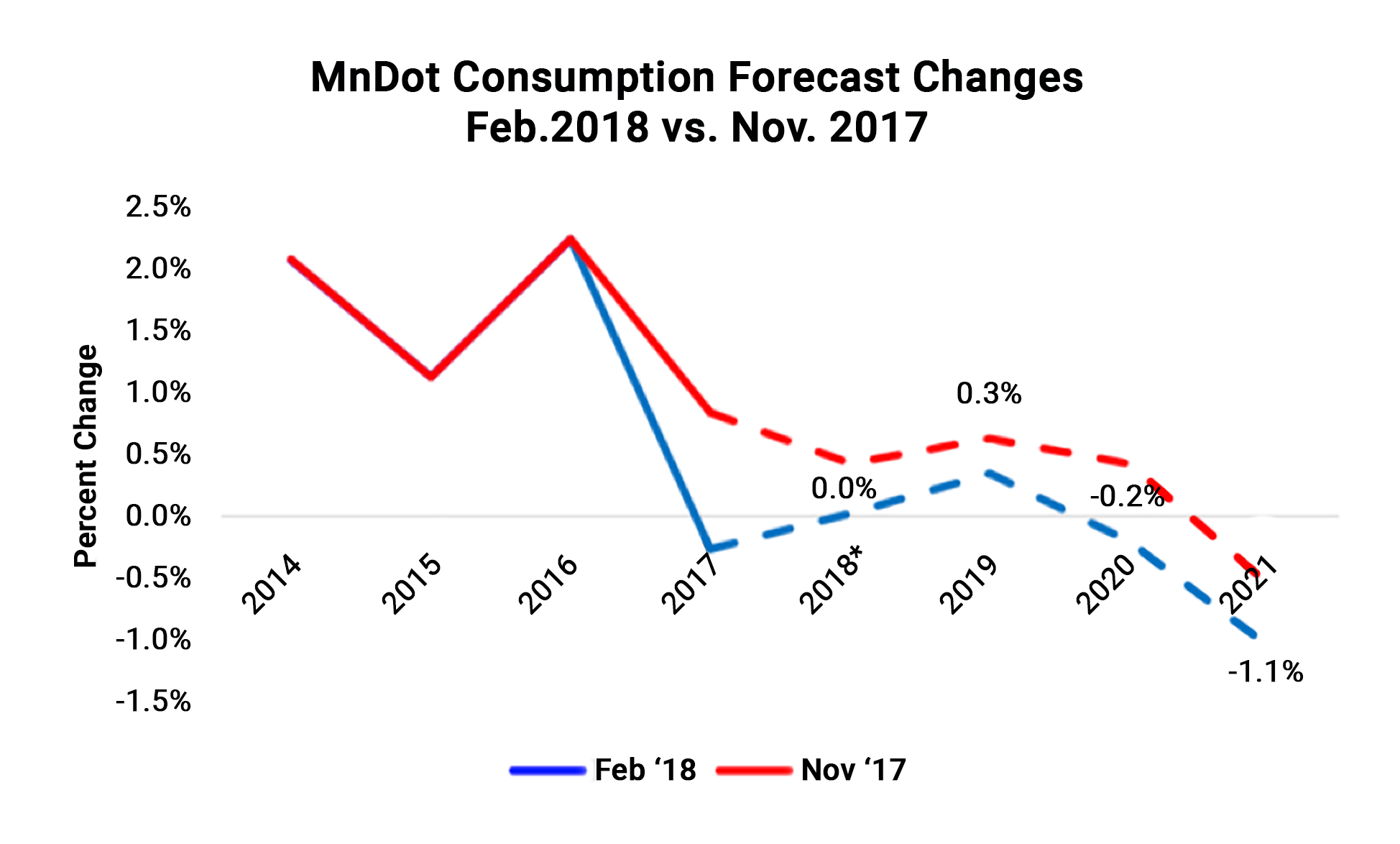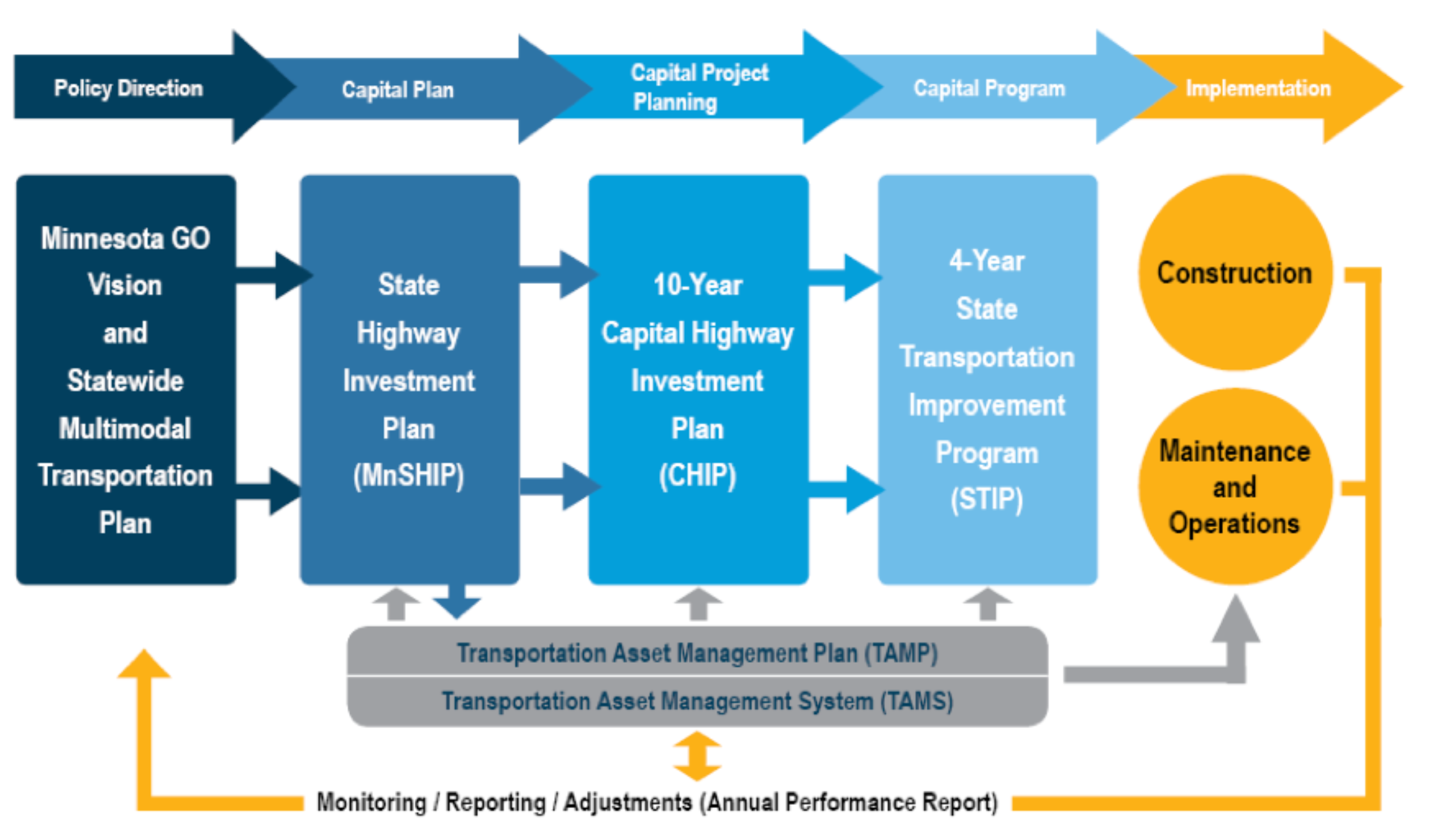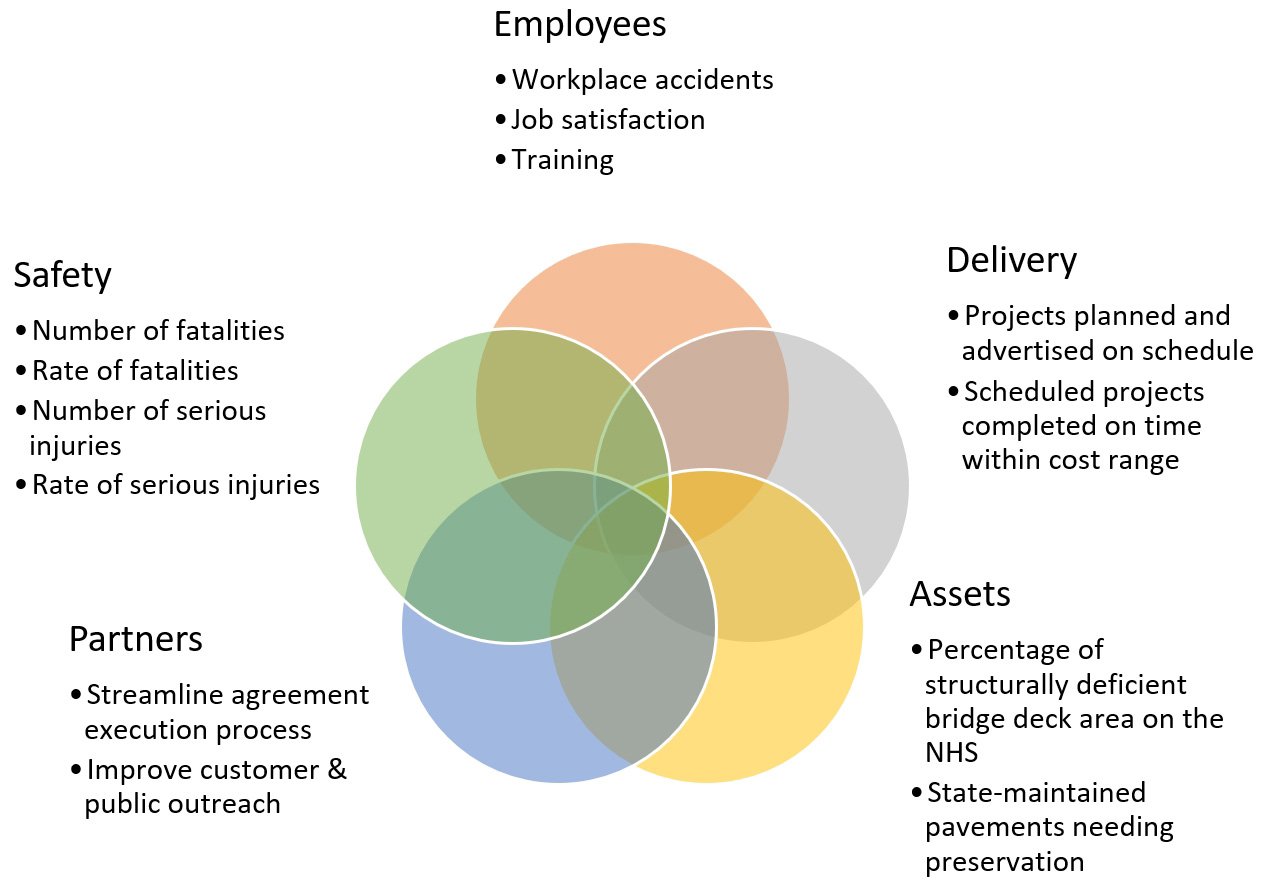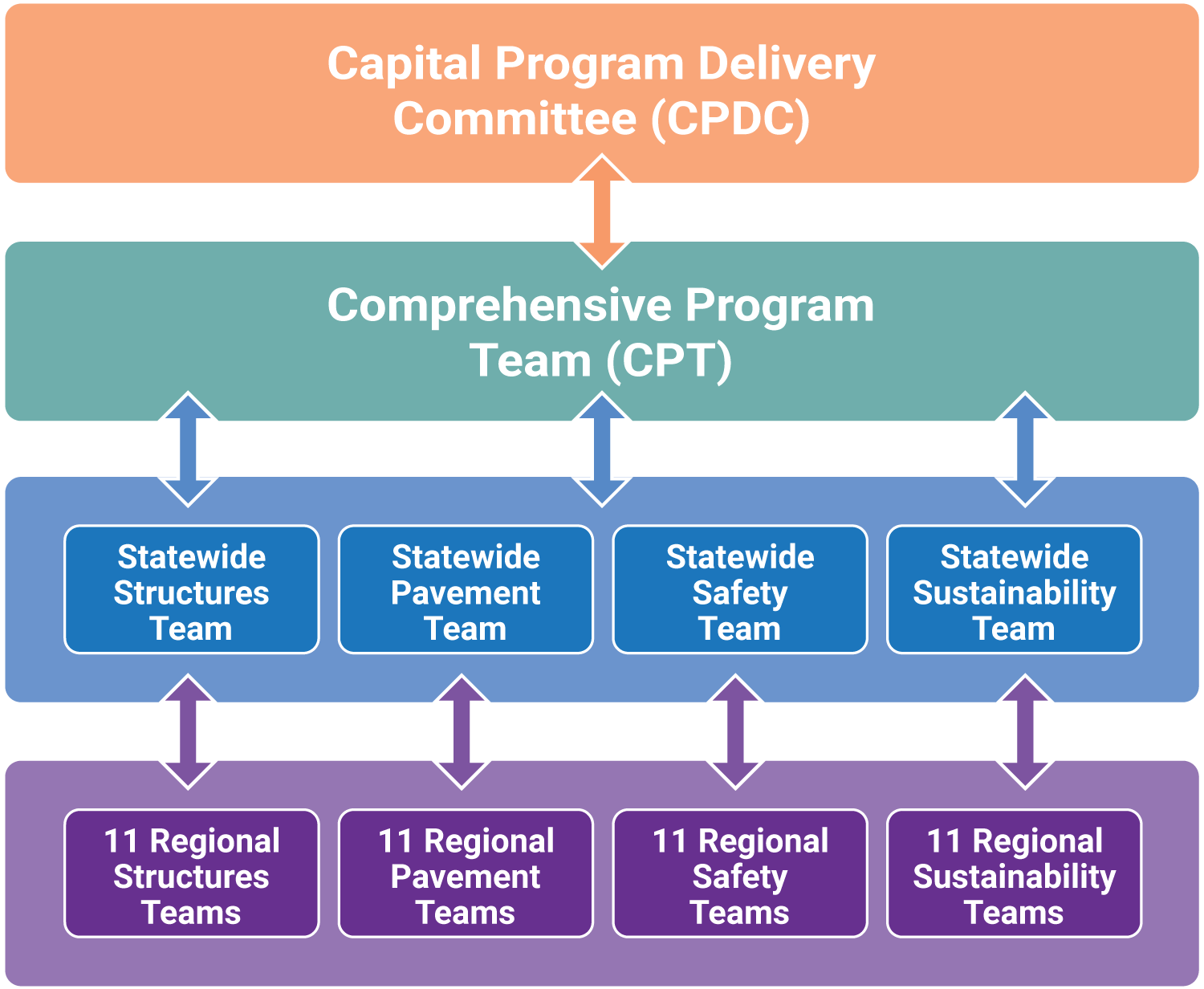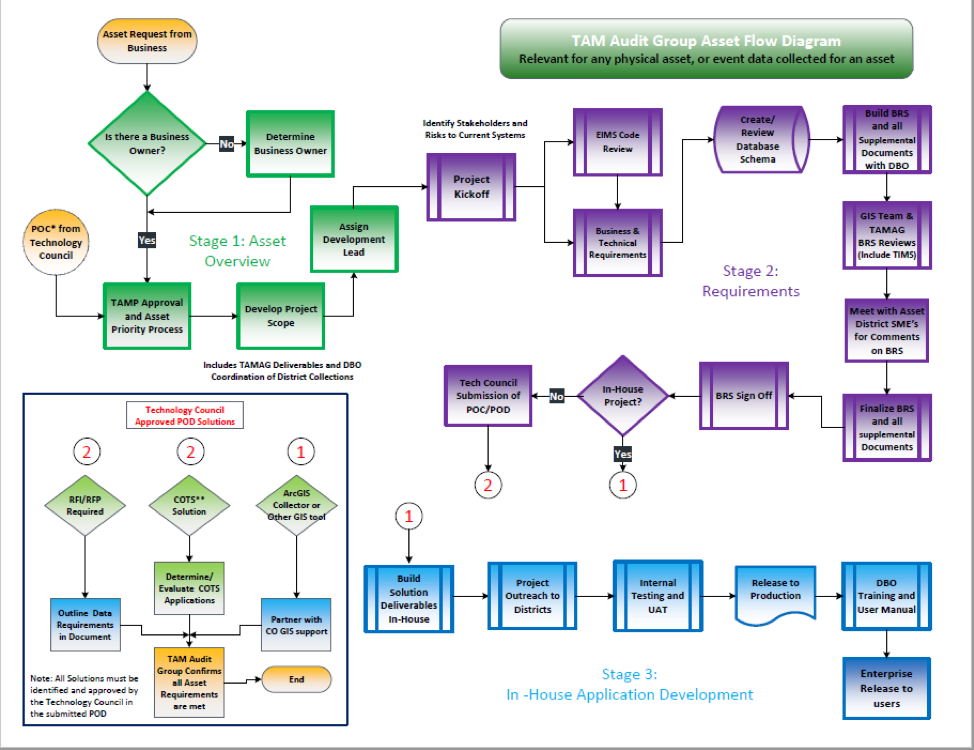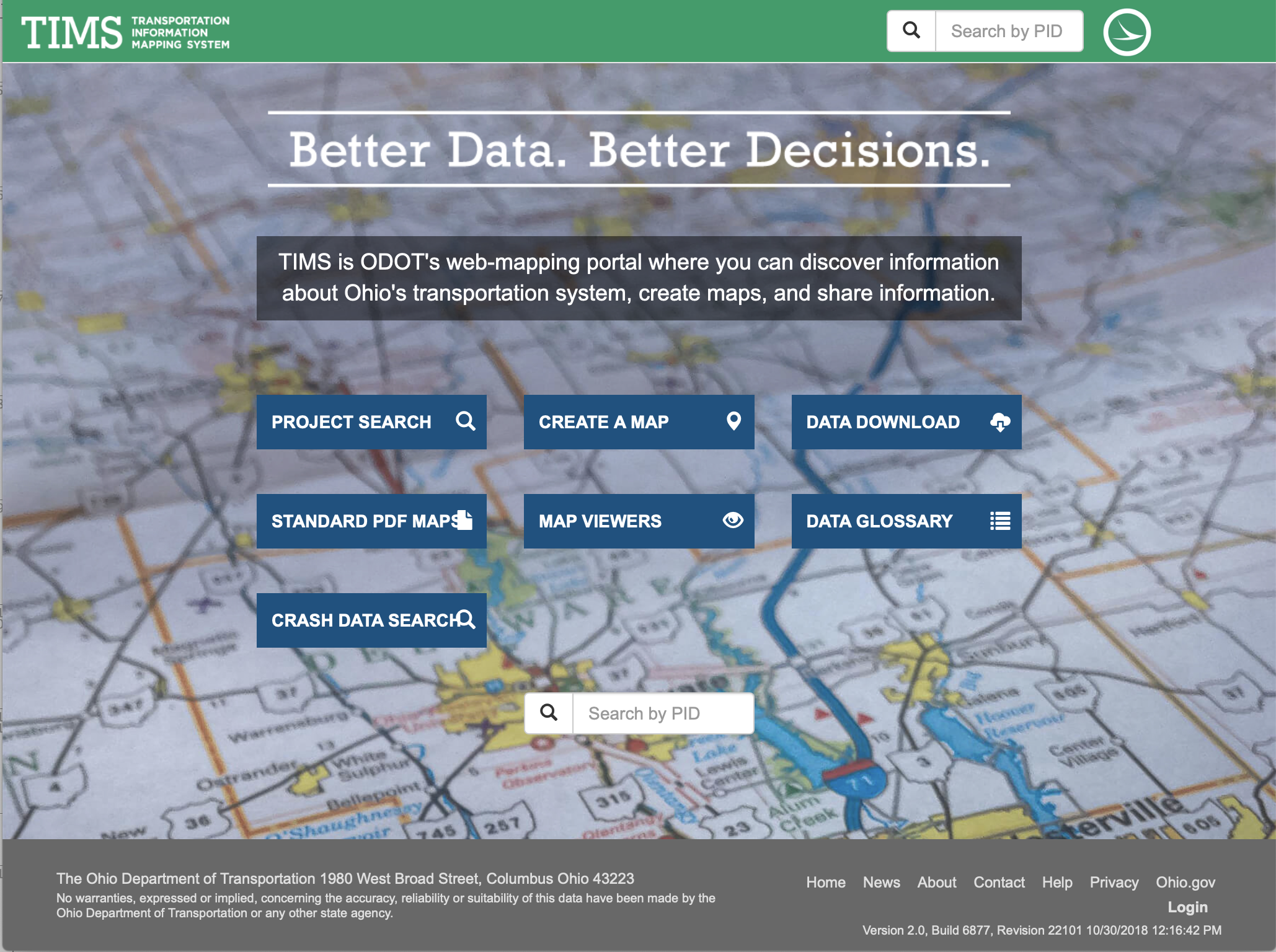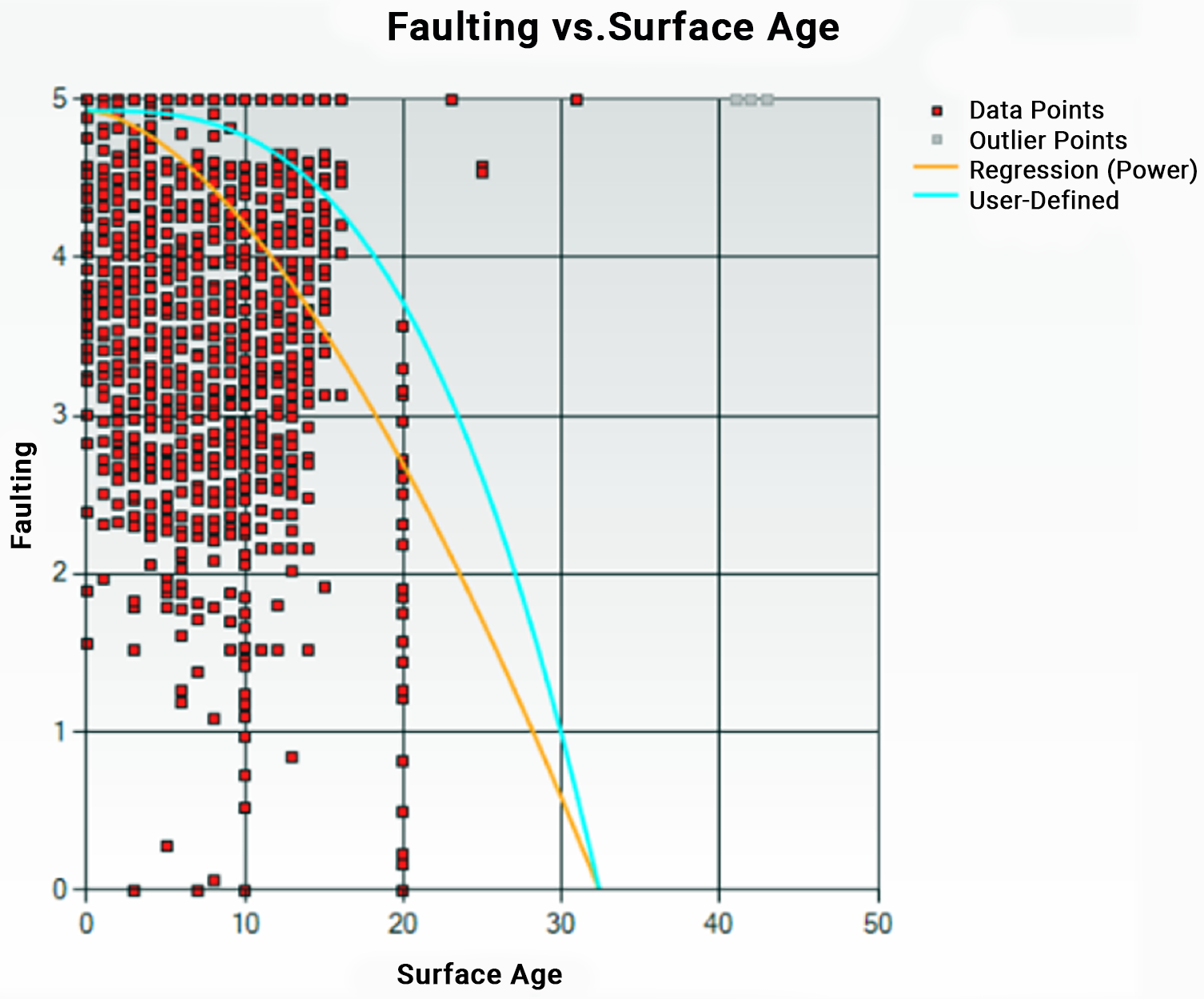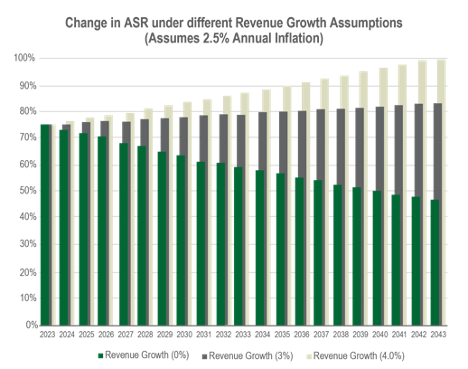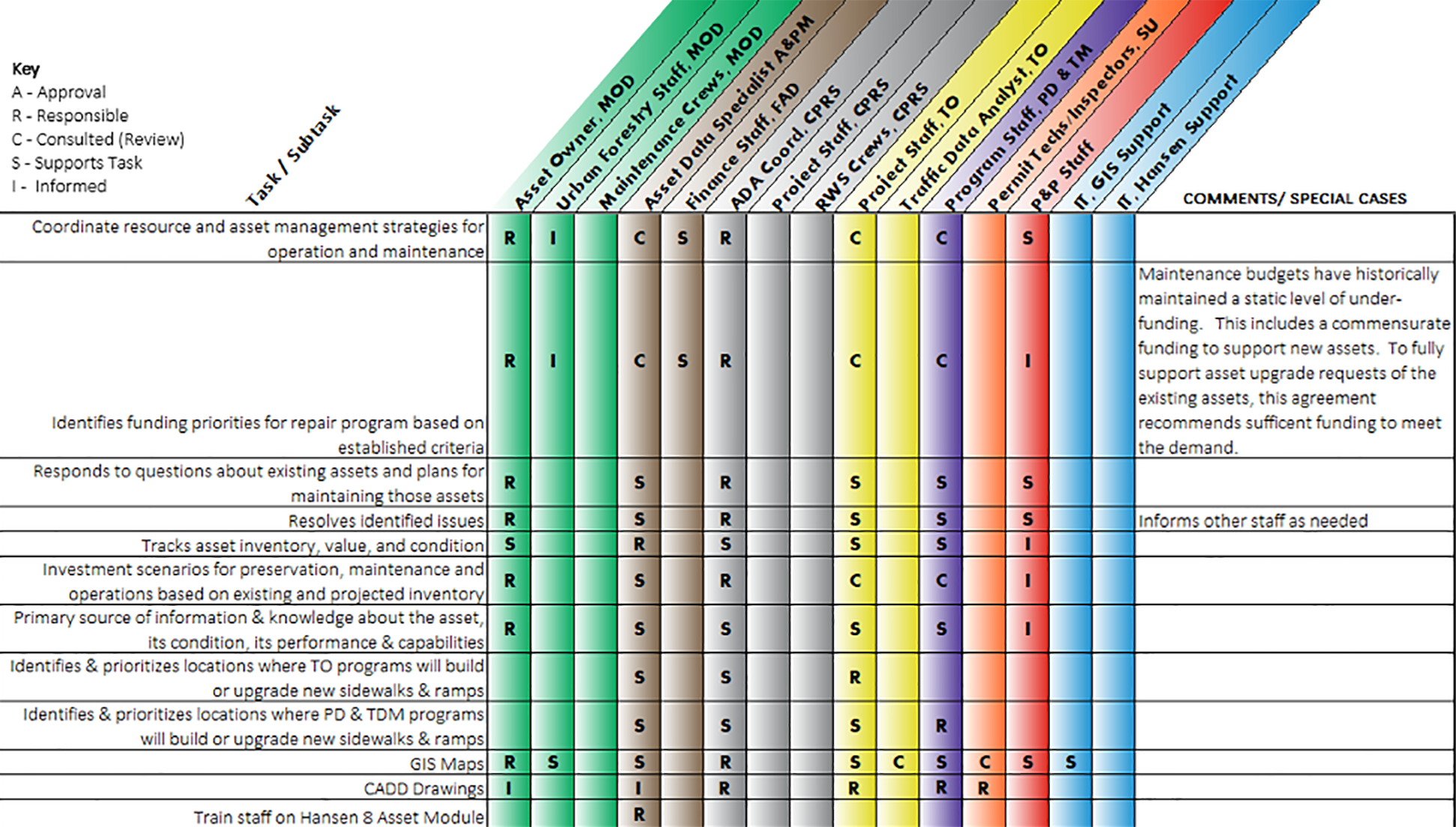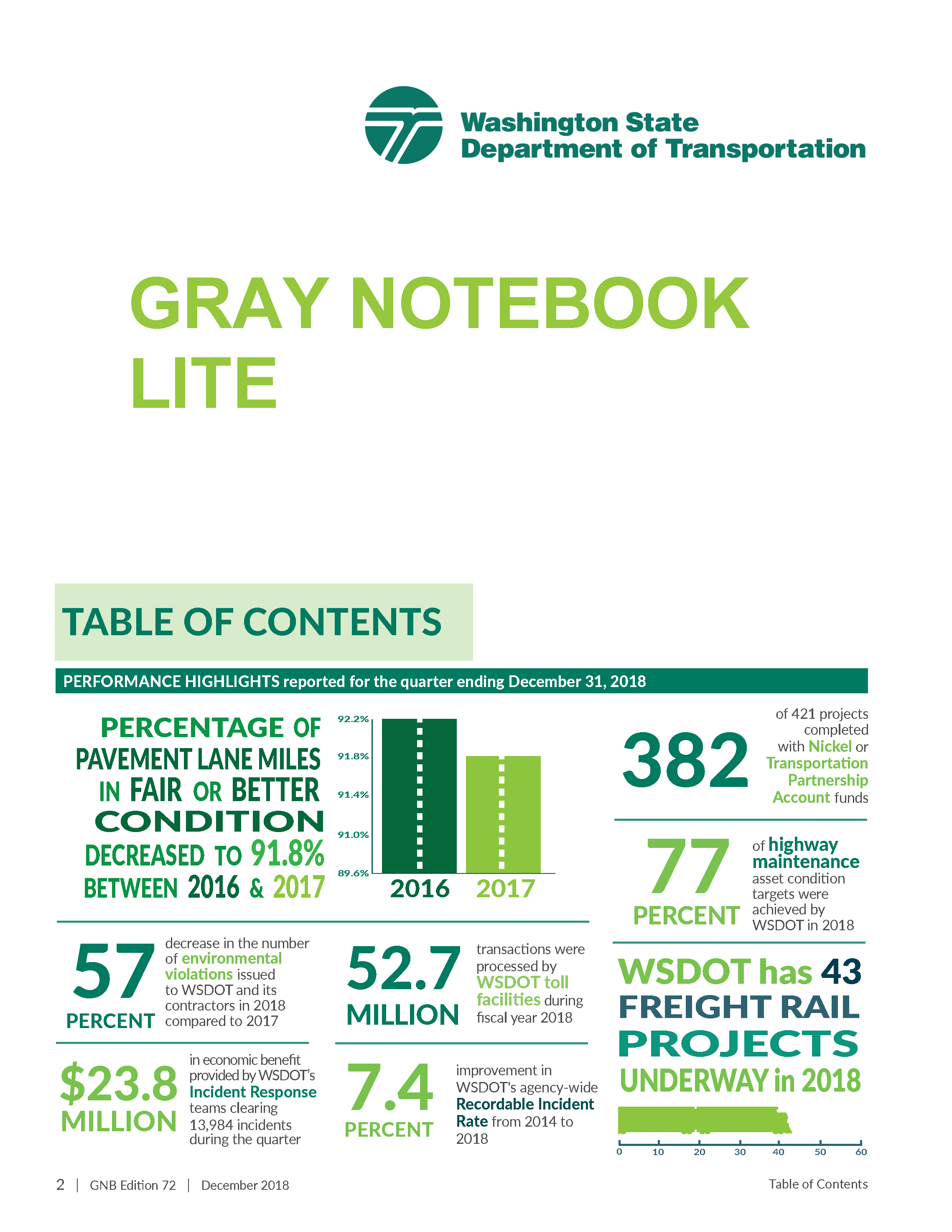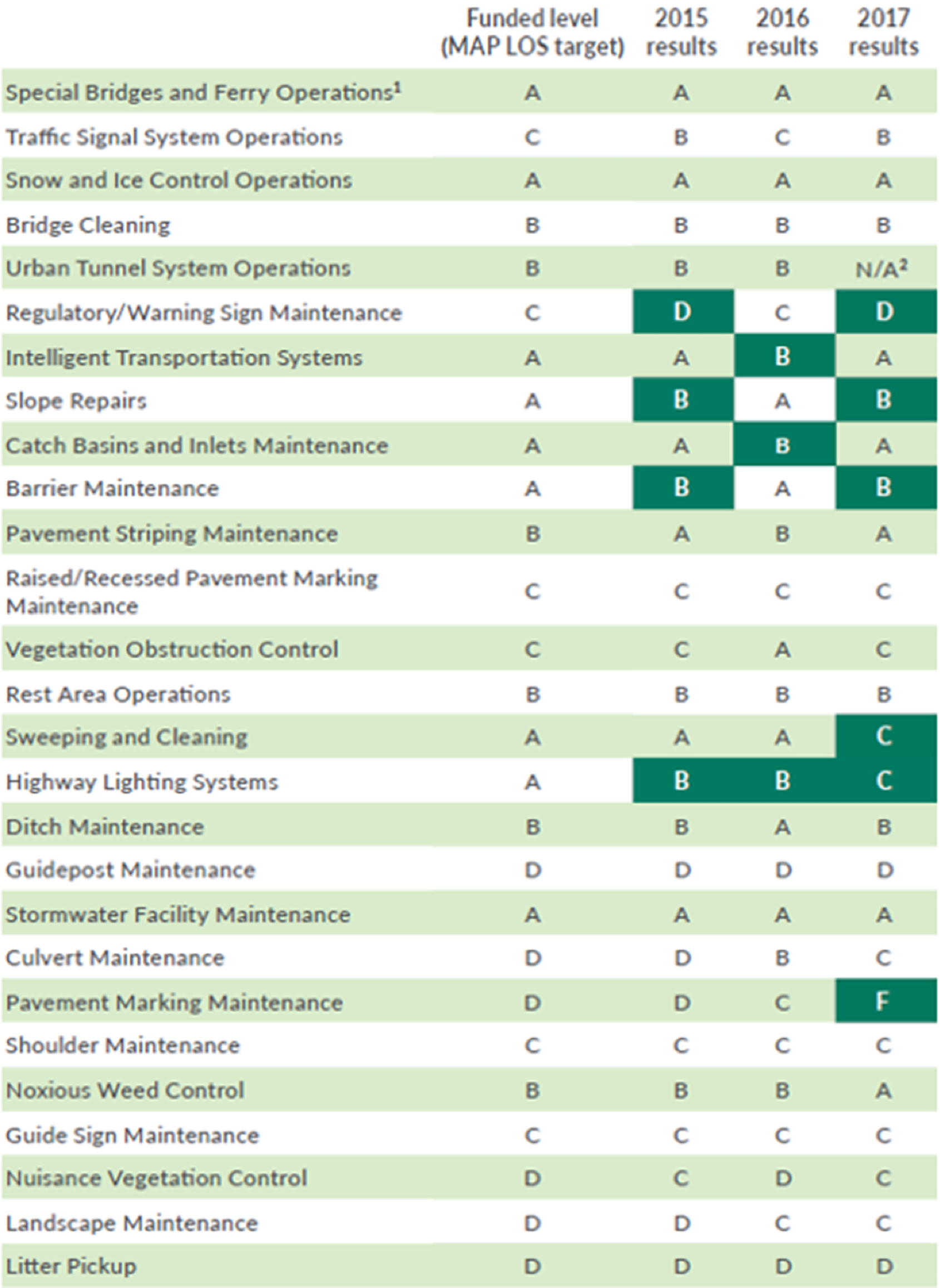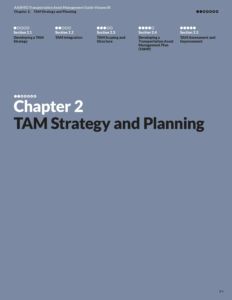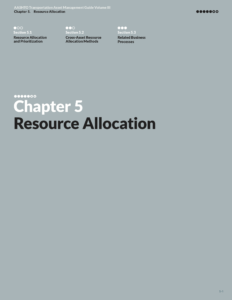Strengthening TAM Practice
The guide is organized into seven chapters. Each chapter concludes with a summary of the typical level of practice of a generic Department of Transportation for three levels of maturity: emerging, strengthening, and advanced. The maturity examples are meant to provide some context for the concepts discussed within the chapter, and the degree to which an agency adopts them in how they conduct service delivery.
- Emerging. The agency is beginning to improve their asset management practices and is emerging to a new way of conducting service delivery. The agency has initiated early steps to advance practices and has a plan for future improvements.
- Strengthening. The agency has established many aspects of a functioning asset management system, achieved several important improvements in how it embeds asset management leading practice into the agency, and continues to strengthen its practices to achieve future goals.
- Advanced. The agency is a role model among its peer agencies and has fully implemented asset management practices across the organization. TAM has become how the agency does business, with a commitment to continuous improvement over time. The agency is advanced relative to most of its peers.
Browse TAM Practices
Integrating TAM Within Agency Strategic Plans & Policies
- Asset management principles are adhered to by some asset management advocates within the agency, but adherence to them is not universal.
- Investment is allocated within service areas (Transit, Highways, Active Transportation, Multi-model Systems) and the asset portfolios (pavements, bridges, transit fleet and facilities) that support them, based on the performance management targets that have been set.
- Asset management principles such as inter-generational equity, triple bottom line decision making, whole of life and service driven decision making can be found in some strategic plans, agency goals and high-level, long term planning documents.
- Investment is sometimes evaluated between asset portfolios (pavements, bridges, transit fleet and facilities), and funding is partially allocated based on a linkage to stated objectives.
- Asset management principles such as inter-generational equity, triple bottom line decision-making, whole life and service driven decision making are embedded within strategic plans, agency goals and high-level, long term planning documents.
- Investment is systematically allocated between service areas (Transit, Highways, Active Transportation, Multi-model Systems) and the asset portfolios (pavements, bridges, transit fleet and facilities) that support them, based on the requirements to achieve stated objectives and service level commitments.
Creating a TAM Policy
- An Asset Management Policy has been drafted or adopted by elected officials and is guiding in-progress changes to investment and operational decision making in the organization
- Policy principles are providing a basis for change and action in the delivery of services with infrastructure.
- An Asset Management Policy has been adopted and influences capital investment decision making in the organization
- The Policy is implemented at high levels within the organization, and its principles help determine overall focus on improving the asset management system action in the delivery of services with infrastructure.
- An Asset Management Policy has been adopted by elected officials and it strongly influences investment and operational decision making in the organization
- The Policy is implemented across the organization, and its principles strongly guide process, and action in the delivery of services with infrastructure.
Organizational Models
- There is an increasing awareness of asset management among staff in some key departments within the organization and they are piloting or demonstrating though leading practice. There is an understanding that service delivery and decision-making should follow a systematic approach.
- There is an organizational structure that supports implementing and sustaining asset management practices consistently in each department of the organization.
- There is a culture of asset management and an awareness among most staff that relationships exist between service delivery, infrastructure decision-making, and clear improvement actions to enhance the asset management system further.
- There is an organizational structure that supports the continuous improvement of asset management practices consistently across the organization.
- The is a culture of asset management and an awareness among all staff within the organization that touches all aspects of service delivery and infrastructure decision-making at the strategic tactical and operational levels.
- There is an organizational structure that supports implementing and sustaining asset management practices consistently across the organization. Embedded in the process are steps to continuously improve the organizational model and business processes.
Roles
- Roles and responsibilities associated with the Asset Management Framework and have been defined, and the organization has begun the transition to the planned management system approach.
- Senior leadership and some key staff involved in implementing asset management in the agency understand their role, and are accountable for ensuring asset management is embedded fully within the organization over time.
- Roles and responsibilities associated with the Asset Management Framework and its processes are defined in most departments.
- Key personnel in the organization including top management and other staff understand their role, and are accountable for ensuring asset management continuously improving across the organization.
- Roles and responsibilities associated with the asset management framework and its processes are clearly defined and are functioning effectively.
- Everyone in the organization, from top management, to field staff, understand their role, and who is accountable for ensuring asset management is embedded fully within the organization.
Competencies
- There is sporadic communication within the organization and externally to relevant stakeholders to help build support for the asset management framework and management systems.
- Staff have growing awareness, knowledge, and capabilities to perform their role in alignment to the asset management system.
- Attempts are made to implement change management strategies to improve and strengthen the asset management program.
- There is regular communication within the organization and externally by the agency that helps build support for the asset management framework and management systems.
- Key staff have an appropriate level of awareness, knowledge and capabilities to perform their role in implementing and improving the asset management system.
- Change management tactics are developed in response to resistance to implementing actions that strengthen the asset management program.
- There is consistent, aligned and supportive communication within the organization and externally to relevant stakeholders that helps build support for the asset management framework and management systems
- Staff have an appropriate level of awareness, knowledge and capabilities to perform their role in alignment to the asset management system.
- A well crafted change management strategy helps implement improvement actions that strengthen the asset management program.
Levels of Service
- Customers are identified, but outreach is not formalized.
- Some technical levels of service or KPIs are defined and considered when intervention alternatives are being evaluated.
- Customer groups are defined and some communication practices are in place to assess wants.
- KPIs are established, but may not be tightly tied to business decisions.
- Maintenance levels of service are established, but there is not a tight connection to KPIs.
- Technical levels of service are defined, and measured to evaluate the effectiveness of past investment and operational decisions.
- Customer groups are defined and clear policies and procedures are in place to assess wants.
- Customer-based KPIs and maintenance levels of service are established at the strategic, tactical, and operational levels.
- Agency performance is routinely measured and reported to all internal and external stakeholders.
Managing Assets for their Life Cycle
- Alternative management strategies are considered for high value/critical asset classes in the portfolio and selected based on efficiency and effectiveness of the transportation network.
- Asset reliability is qualitatively considered in a systematic way for some asset classes.
- Reactive and interval-based approaches that are based on risk assessments are used where appropriate.
- Management strategies are periodically re-evaluated to determine if a change in management practice would be more effective.
- Deployment of maintenance crews, capital projects, and network operation resources are coordinated to ensure the right interventions are occurring in the right locations, at the right time on the transportation network to deliver mobility service levels at an acceptable cost and level of risk.
- Appropriate condition, interval and reactive based management strategies have been established for most asset classes.
- Asset reliability is well understood and is aligned with risk tolerance in the agency.
- Assets are planned, acquired and managed with an awareness of the costs, risks, and service performance characteristics over the entire life cycle.
- Appropriate management strategies are established and periodically re-evaluated to determine if a change in management practice would be more effective.
- Deployment of maintenance crews, capital projects, and network operation resources are coordinated to ensure the right interventions are occurring in the right locations, at the right time on the transportation network to deliver mobility service levels at an acceptable cost and level of risk.
- Appropriate condition, interval and reactive based management strategies have been established for every asset class in the portfolio, to support management of the transportation network efficiently and effectively.
- Asset reliability is well understood and is aligned with service expectations and risk tolerance in the agency.
- Strategic, tactical and operational activities directly consider alternatives that balance service delivery and investment of resources.
- Reactive and interval-based approaches that are based on risk assessments are used where appropriate.
- Management strategies are periodically re-evaluated to determine if a change in management practice would be more effective.
- Deployment of maintenance crews, capital projects, and network operation resources are coordinated to ensure the right interventions are occurring in the right locations, at the right time on the transportation network to deliver mobility service levels at an acceptable cost and level of risk.
Data and Systems for Life Cycle Management
- A computerized maintenance management system is being implemented/customized to better understand operations and maintenance activities within the agency.
- Some basic asset modeling is used to predict asset performance in the future for financial planning purposes.
- Computer management systems meeting the minimum federal requirements are implemented and used for compliance.
- A computerized maintenance management system captures operations and maintenance costs within the agency and assigns these to assets appropriately.
- Appropriate probabilistic and deterministic modeling techniques are used to predict asset performance for high value assets.
- A computerized maintenance management system captures operations and maintenance costs within the agency, and supports trade-off analysis between capital investment and operations and maintenance intervention alternative tactics
- Appropriate probabilistic and deterministic modeling techniques are used to predict asset performance in the future, and inform financial planning and intervention selection.
Cross Asset Resource Allocation
- Basic decision support tools are embedded across the organization and used to qualitatively inform decision-making for funding allocation between asset classes.
- Multi-objective allocation approaches are being considered or trialed to allocate funding across asset classes to balance risk, service delivery and investment.
- Service levels and associated performance measures are evaluated and considered for allocation decisions
- Decision support tools including computerized systems are being procured or implemented to inform decision-making for funding allocation in the future near term.
- Appropriate multi-objective allocation approaches are established in the agency and employed to allocate funding across asset classes to balance risk, service delivery and investment.
- Service levels and associated performance measures are evaluated and linked directly with allocation decisions
- Decision support tools including computerized systems are embedded across the organization, and used to inform decision-making for funding allocation.
Performance Measurement and Management
- Some key performance measures are established within the organization and are beginning to be measured.
- Performance measures are periodically reviewed and enhanced over time.
- Regular reporting of progress with trends tracked over time.
- Performance measures are established within the organization and provide a strong linkage between agency objectives and the processes for capital decisions.
- Regular reporting of progress with clear trends indicating improvement.
- Performance measures are well established within the organization and provide a strong linkage between agency objectives and the processes for capital and operational decisions.
- Performance measures are directly used to prioritize investment needs.
- Regular reporting of progress with clear trends indicating significant improvement over time.
Resource Allocation and Prioritization
- The goals of infrastructure investment and management are clearly defined.
- The long-term investment requirements are understood for all asset classes in the existing portfolio and is based on at least a 20-year horizon to capture near term investment needs and is based on known intervention and replacement costs.
- Investment prioritization is directly linked to goals for the agency.
- A systematic, repeatable approach is used to allocate resources for high value assets in some departments who are managing infrastructure.
- Alternative delivery options considered where problematic issues are encountered.
- The goals of infrastructure investment and management are clearly defined.
- The long-term investment requirements are understood for all asset classes in the existing portfolio, and is based on at least a 20 year horizon, as appropriate to capture all known large interventions for high value assets, and is based on known intervention and replacement costs.
- Investment prioritization is directly linked to goals and performance measures are qualitatively evaluated in the prioritization process.
- A systematic, repeatable approach is used to allocate resources, and the process is well understood by key decision-makers in the agency.
- Resource allocation methods are trending to become consistent across the agency in the near term.
- Alternative delivery options are periodically evaluated in some departments to consider alternative use of resources for service delivery.
- The goals of infrastructure investment and management are clearly defined.
- The long-term investment requirements are understood for all asset classes in the existing portfolio, and is based a sufficient horizon to capture the expected service life for all owned assets, and is based on known intervention and replacement costs.
- Investment prioritization is directly linked to goals, performance measures and evaluated against the constraints that may exist for the agency.
- A systematic, repeatable approach is used to allocate resources, and the process is well understood and employed across the agency by all departments managing infrastructure.
- Resource allocation methods are consistent across the agency and supports cross-asset resource allocation methods, where appropriate.
- Alternative service delivery options are periodically evaluated systematically to ensure the best use resources for service delivery.
Monitoring the State of Assets
- Asset data collection and management is in transition to better support timely and accurate performance reporting.
- The performance measurement framework is evolving to improve goal alignment and trend the agency to desired outcomes.
- Asset data collection and management supports performance reporting.
- Periodic review of performance measurement framework is carried out to confirm measures are appropriate, aligned with objectives and suitable to trend the agency to desired outcomes.
Monitoring Funding and Resource Allocation Methods
- Trend analysis is employed by the agency to help identify potential adjustments to improve performance targets.
- Trend analysis and other analytical tools are being trialed by the agency to help identify potential adjustment actions to improve performance.
- Current status is understood by all internal stakeholders, and resource allocation in some departments is supported by informed decision-making.
- Trend analysis, performance forecasting and other analytical tools are employed by the agency to help identify potential adjustments to operational, tactical or strategic actions to help achieve performance targets.
- Current status is understood by all internal and external stakeholders, and resource allocation is supported by informed decision-making.
Monitoring Asset Work and Costs
- The agency is improving its ability to track operations and maintenance costs and capital investments and link them to assets in the portfolio.
- Some departments can analyze the effectiveness and efficiency of their alternative interventions.
- The agency tracks operations and maintenance costs and capital investments, and these are linked to the asset to which they apply.
- Analysis is periodically carried out to assess efficiency of alternative interventions.
- The agency has accurate method of tracking operations and maintenance costs and capital investments, and these are linked to the asset to which they apply.
- Analysis is periodically carried out to assess the effectiveness and efficiency of the alternative interventions and trade-off between maintenance and capital decisions.
Tracking and Managing Risks
- The agency has identified some operational risks, manage them in a risk register and have established targeted mitigation strategies.
- The agency has an integrated risk management framework that allows risk to be employed at a more than one level within the agency.
- High risks are proactively managed or leveraged.
- The agency has an integrated risk management framework that allows risk to be employed at strategic, tactical, and operational levels.
- Risks are proactively managed or leveraged.
- Managed risks show reduced frequency of negative consequences or opportunities are captured as appropriate.
- TAM processes are evaluated regularly for improvement.
Information and Systems
- Agency information systems are unintegrated, however the current portfolio of systems are well mapped, and an improvement plan is in progress to improve integration toward a clearly defined future state that is suited to agency requirements.
- Agency information systems are partially integrated, interconnected and a plan is being implemented to create a system that is suited to agency requirements.
- Agency information systems are fully integrated. Systems supporting inventory management, data warehouses and statistics, inspections and condition assessments, maintenance management, performance modeling, analytics, forecasting and financial systems are interconnected and are suited to agency requirements.
Collecting Asset Data
- Collection occurs periodically and data is maintained, current and accurate.
- Data collection strategies are targeted to agency decision-making requirements.
- Collection occurs periodically and data is maintained, current and accurate.
- Data collection strategies are targeted to agency decision-making requirements, and collection resources add value.
- Collection occurs periodically and data is maintained, current and accurate.
Asset Data Sharing, Reporting and Visualization
- Information is available to most stakeholders and allow for improving decisions over time.
- Data and analysis presentation is improving with a plan for consistency across the agency.
- Information is available to most stakeholders and allow for informed, supported decisions
- Data and analysis presentation is improving and is targeted to key decision-makers, and consistent across the agency.
- Information is available to all stakeholders and allow for informed, supported decisions
- Data and analysis presentation is well crafted, easy to understand for the targeted audience, and consistent across the agency.
Data Governance and Management
- Data governance and management practices are being established with a gap assessment identifying an improvement strategy over time.
- Data governance and management practices well established and support continuous improvement in data systems.
- Data governance and management practices well established and support reliable, consistent, integrated and accessible data systems
- Governance frameworks are reviewed periodically to ensure it evolves with agency requirements.




